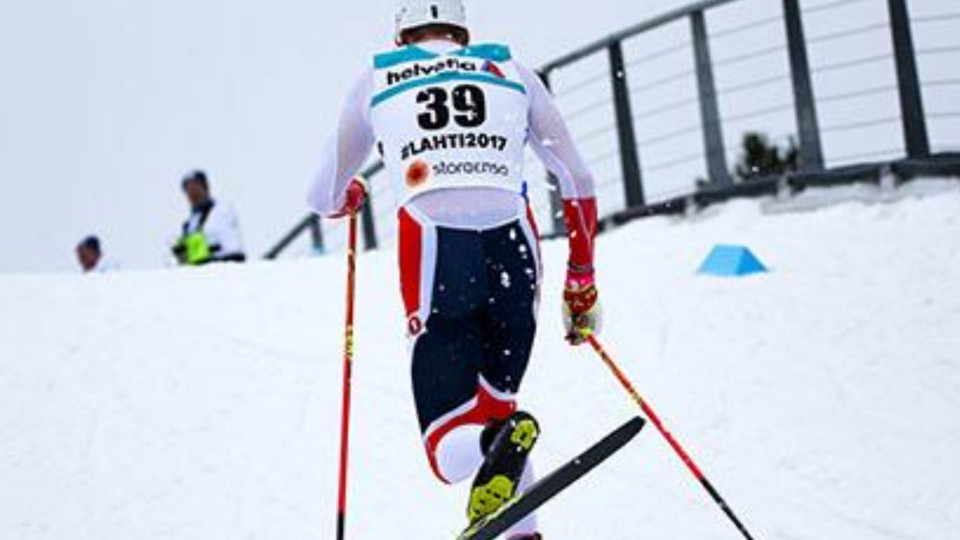Posted by Karmen M. Whitham on Jul 27th 2020
KLAEBO RUN
As a high school coach and someone who teaches new skiers, I read "uphill running" and my mind screeches in alert "this is a classic case of "'you need to know the rules before you can break the rules'".
This review captures a study released earlier this spring by some of my favorite researchers who investigated the biomechanics of uphill "running diagonal stride" and traditional diagonal striding uphill, or what they are calling "conventional diagonal stride". Using 10 elite Italian skiers (all male) as subjects, the study measured force applied via poles and foot along with angular motions at the knee and hip joints.
Ultimately, what they found was that "running diagonal stride" (a.k.a "The Klaebo Run") offered more propulsion & more rapid cycle rate, deeper knee flexion (with earlier extension at the hip and knee joints at the end of the stride), earlier leg extension, and overall more range of motion at the knee joint compared to diagonal striding. Since this study was done on a treadmill, more research on snow is believed to help discover if ski-running provides higher acceleration and/or a faster peak speed. (...Which is what we really want to know to increase performance and win races.)
But before novice skiers and masters use the technique to hide substandard gliding practices, albeit rudimentary uphill strategies, let me explain that this technique should be considered a skillful tool in a skier's arsenal of sub-techniques for more dramatic of race situations, like sprinting and 5k's-not halfway through a 5-hour Birkie.
My takeaway: The study highlights that the Klaebo Run technique should be practiced by elite and the aspiring elite/professional skiers as an important skill to possess, and may be a solution for getting uphills when grip-wax calls for scarcity. Secondly, the study brings to focus the importance for coaches and ski programs to develop better drills and practices in an effort to perfect this newly studied technique...and perhaps USSA clinics to standardize some new drills for the next conferences.
Coincidently, when I contacted coach Andy Newell from Nordic Team Solutions about any drills he would recommend, he was working on a video (below) about this very topic, released earlier this week, in addition to a very insightful and full explanation of muscle topography & execution explaining why ski-running works mechanically. This can be found under this weeks' NTS resources section.
Can You Run Like Klaebo?
I thought it was interesting to think about in plain terms, that a high cycle rate is important to increase performance while sprinting, while a high cycle length is important for performing best at distance races, as "cycle length reaches a plateau and/or more speed is desired". This is what I've referred to my athletes as "changing gears on your skis, just like in a car", but with more scientific dissection.
Klaebo Running is here to stay, so let the drills and exercises to prefect this technique pursue.
Works Cited
1. Pellegrini, Barbara, et al. "Biomechanical Analysis of the 'Running' vs. 'Conventional' Diagonal Stride Uphill Techniques as Performed by Elite Cross-Country Skiers." Journal of Sport and Health Science , 17 Mar. 2020, pp. 1-11., doi:https://doi.org/10.101/j.jshs.2020.04.011.
karmenw@endurance-enterprises.com
Exercise Physiologist
SkiPost News Editor
KlLAEBO RUN Discussion Board
Ski Post:
With regard to the Klaebo run, this technique was used by the Polish national team in the 70's. Marty Hall sarcastically called it the "kick a football up a hill" technique. Had the Polish team been more
competent with the other classic techniques this approach to climbing might have been implemented decades ago.
In the late 90's a careful analysis was made, by the Norwegians, of all of the specific motions for both classic and skate. The very subtle changes that they have made in their instruction, starting at
the earliest levels has given the Norwegians a profound advantage in competition. Most American coaches seem to accept the notion that if it looks like what they believe is right, it has to be right.
The Norwegians have never settled for a "past tense" orthodoxy.
In the past two years, I have visited five different ski clubs in Norway and just as soon as young skiers can coordinate pole placement with the proper foot impact, they will start using the Klaebo climbing technique.
You don't have to do a lot of research to see the efficiencies in the movement. The down side is that it takes more power and sucks up more energy than a traditional stride. Unless a skier has the depth of training to sustain such a technique up and over a hill, and not go so deep that he/she can't recover, then it is best to stride.
There is a major difference between Klaebo's run and Northug's attack. Northug would use a more traditional stride two thirds up a steep climb and then would attack with a Klaebo run, leaving his competition behind.
In the next couple years we will see more and more strong young Norwegians using that approach to steep climbs, but they will be developing a conditioning base so they can sustain that high energy output earlier on the climb.
This approach to climbing is just one of fifteen essential elements that are being taught at the earliest levels. I find it surprising that an American hasn't contributed any significant technique change since Bill Koch, who never settled for anything that he thought could be improved.
-DP
Hey SkiPost,
It was interesting to see members of the Norwegian World Junior men's relay team attempting to "Klaebo" (and badly) during the classic legs. They were using it on terrain that didn't look to indicate that technique, and I wonder if a whole generation of Norwegians are going to just "do the Klaebo" on every hill because "that's what JHK does!"
Cheers,
-BA
Have a thought? Write it in weanswer@skipost.com

